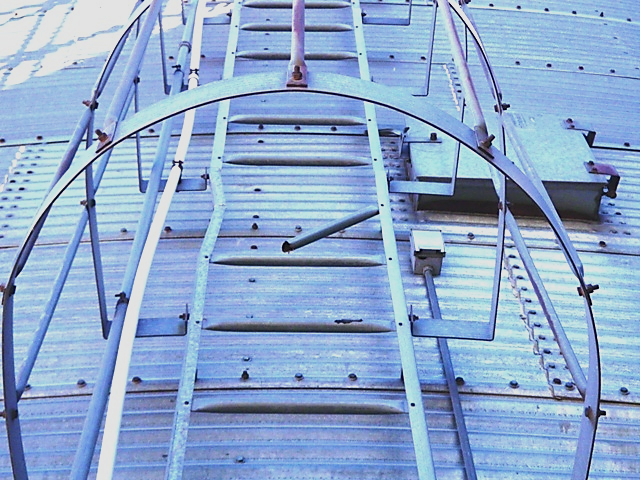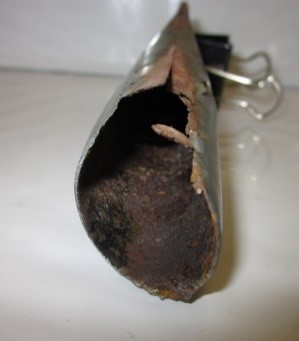Falls account for most injuries in ag operations. One of the more dangerous fall hazards faced by farmers and agricultural workers is climbing grain bins. There are many reasons to climb grain bins; opening or closing manhole covers, moving spouts, replacing belts, checking spreader operation, checking the stirrator, checking grain level, checking grain moisture, monitoring grain quality, just to name a few.
Ladders on older grain bins are not built to the same standards as newer bins. Rung spacing and toe clearance were not standardized. It is common to have bins in the same complex with different rung spacing and toe clearance. This difference between spacing can cause a misstep.

Take the following precautions to limit the risk of climbing bin ladders:
- Put any tools or equipment in your pockets or tool belt to keep your hands free for climbing. Use a rope and a bucket to hoist up tools and equipment that you cannot fit into your pockets or tool belt.
- Don’t rush up and down the ladder. Slow down and make sure to use 3 points of contact when ascending and descending. Make sure the soles of your boots are clean and have great traction.
- Inspect bin ladders for corrosion or damage. ladder rungs can corrode from the inside out with the weakness not visible from the outside. Keep your hands and feet toward the outer rails to limit the amount of stress on older ladder rungs.
- Weather conditions and humidity also contribute to the hazards of climbing bins. Rain, ice, snow and condensation dripping from the roof edge can reduce the friction and grip on the ladder rungs. If the rungs are wet, icy or snow covered, wait until later in the day when the rungs are clean and dry.
- Replace older corroded ladders now instead of waiting for an accident. Fall protection harnesses can also be used to reduce the hazards. Cables can be installed on the ladder with a wire rope grab attached to your lanyard and harness.

A fall from a grain bin would be devastating to your operation. Take some time now to review your current practices and adjust to reduce the risk for this type of accident.


